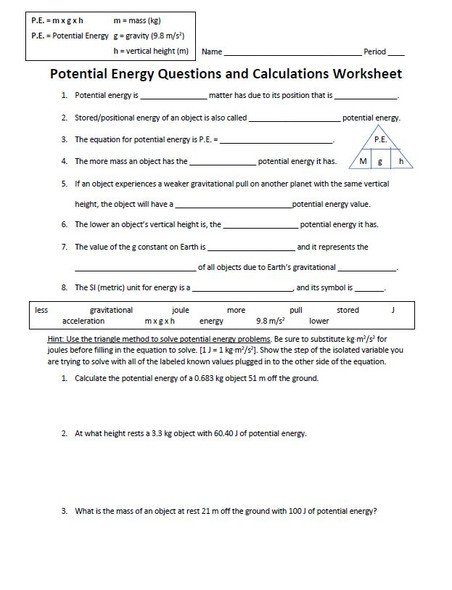Description
Looking for an engaging way for students to explore kinetic and potential energy? In this activity, students will apply their understanding of kinetic and potential energy, as well as energy transformation, by building, testing and evaluating their very own roller coaster. The activity is based on a free, interactive simulation program from The Jason Project (National Geographic). There are guided-questions that pair with the simulation’s tutorial to ensure students have an understanding of the basic principles of energy transfer prior to building their coasters. In addition, students will collect data on their roller coasters and reflect on their process and results.
Check out more resources at the Ysci store
This activity was designed for students taking physical science, but it can also be used in foundational physics courses.
With what standard does this resource align?
This resource will support students in moving towards the mastery of the Next Generation Science Standards.
Middle School:
-
NGSS MS-PS3-1: Construct and interpret graphical displays of data to describe the relationships of kinetic energy to the mass of an object and the speed of an object.
-
NGSS MS-PS3-2: Develop a model to describe that when the arrangement of objects interacting at a distance changes, different amounts of potential energy are stored in the system.
-
NGSS MS-PS3-5: Construct, use, and present arguments to support the claim that when the kinetic energy of an object changes, energy is transferred to or from the object.
High School:
-
NGSS HS-PS3-3: Design, build, and refine a device that works within given constraints to convert one form of energy into another form of energy.
What do I need?
-
Access to the internet
-
An electronic device with flash
How do I use this resource?
-
In-class activity (individual or pairs)
-
Flipped learning
-
Homework
What’s included?
-
1 student copy of the online simulation lab
-
1 teacher answer key
-
Tips
Connect with me
Instagram: @yscivideo
YouTube: https://www.youtube.com/yscivideo
Terms of Use
Copyright © 2019 Ysci
By purchasing this file, you agree to the following terms. All rights reserved by author. This product is to be used by the original downloader only for personal or classroom use only. Copying for more than one teacher, classroom, department, school, or school system is prohibited. Additional licenses can be purchased at a discount for others to use in your department. This entire document, or any parts within, may not be reproduced or displayed for public viewing. You may NOT electronically post this product online including to teacher blogs, classroom websites, school networks or Google Classroom. Failure to comply is a copyright infringement and a violation of the Digital Millennium Copyright Act (DMCA).






















